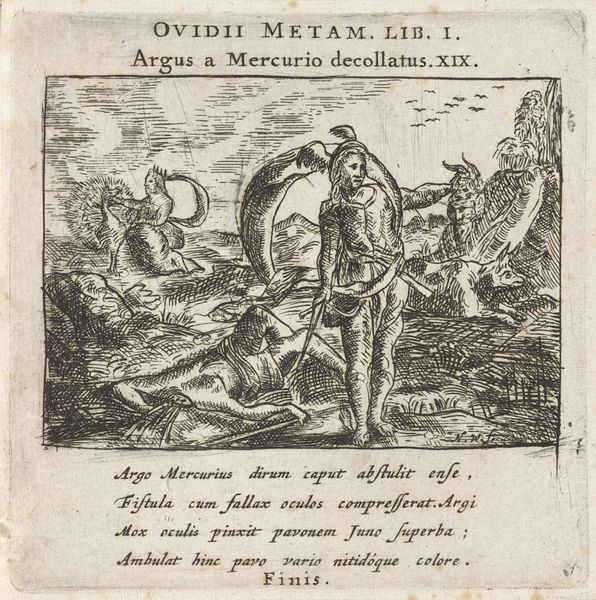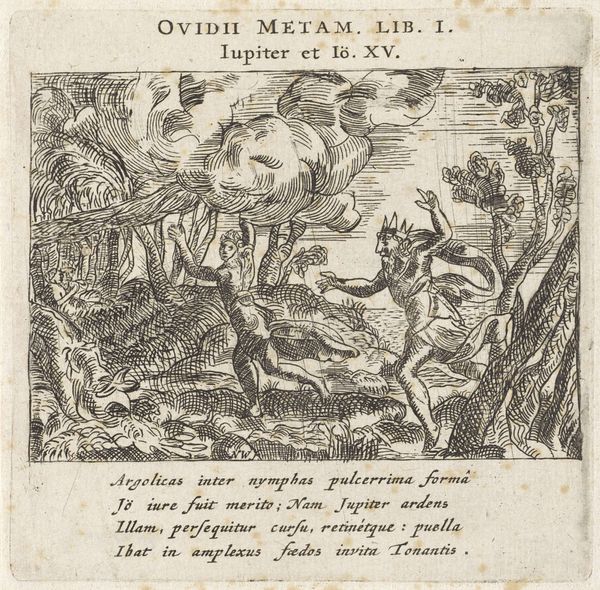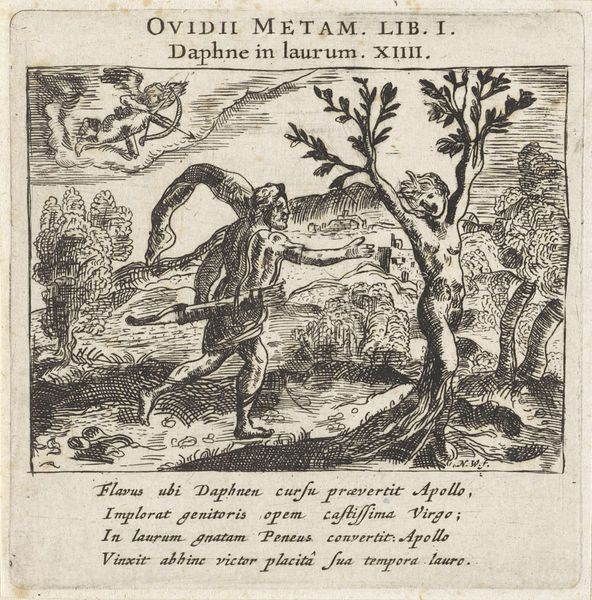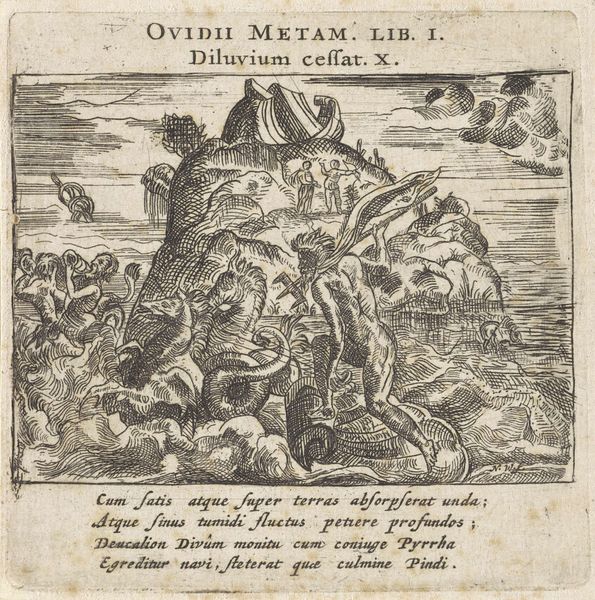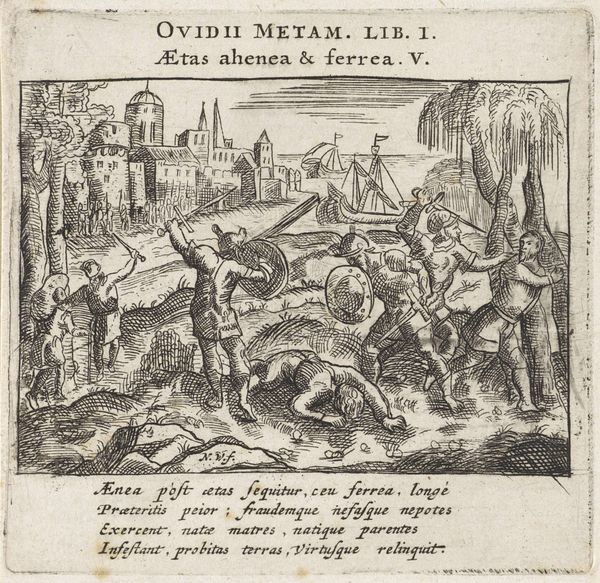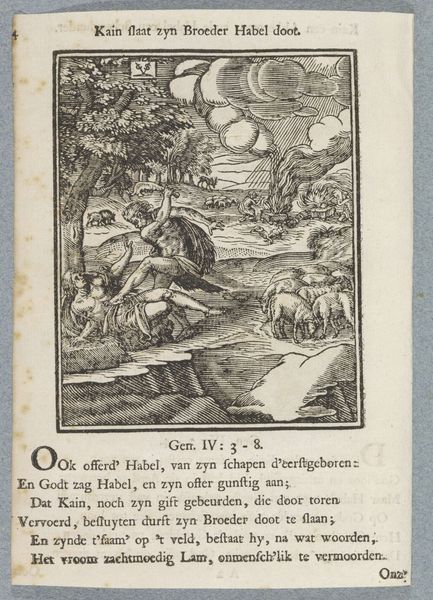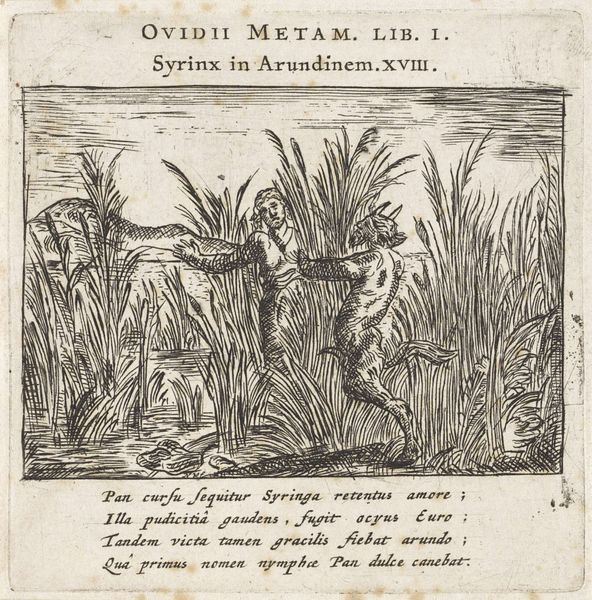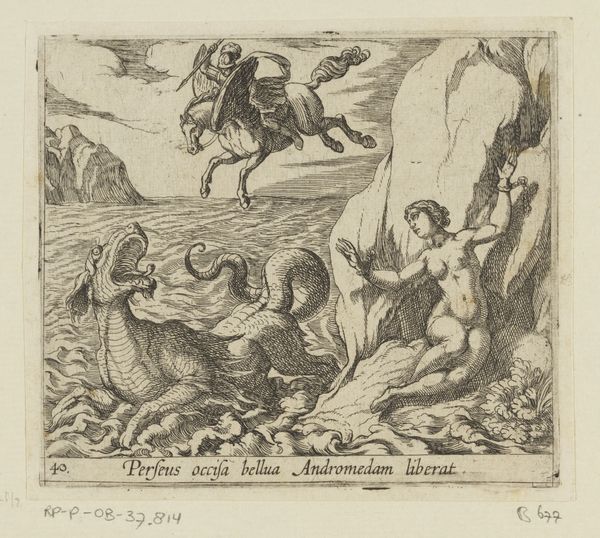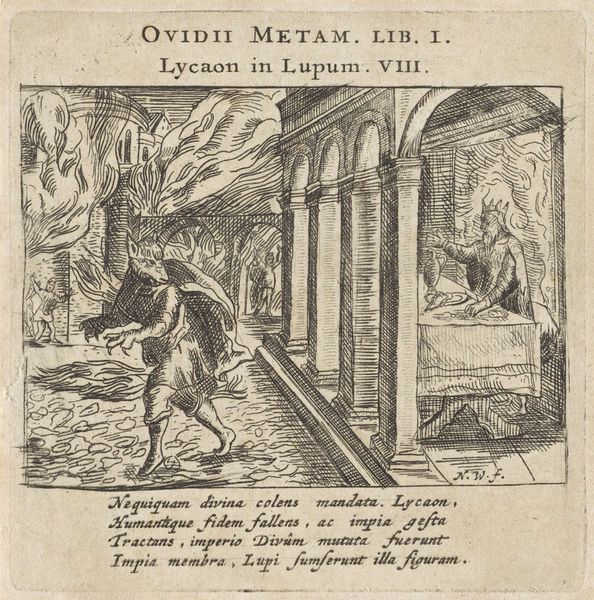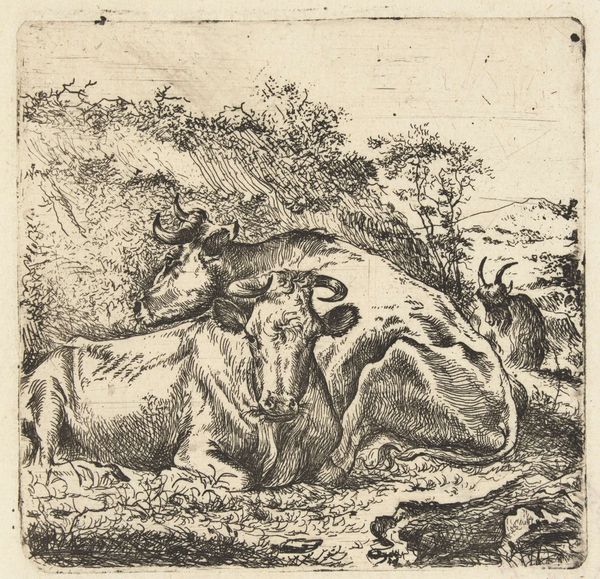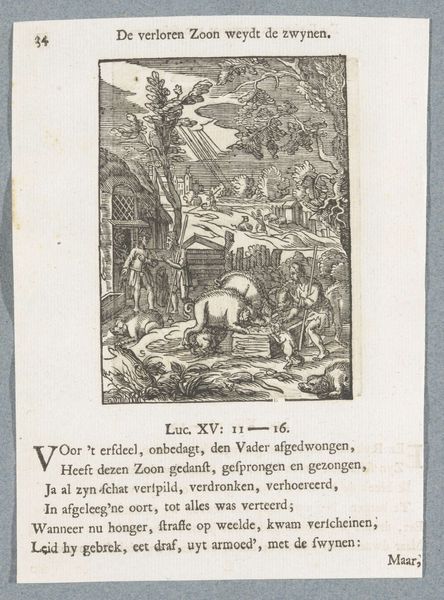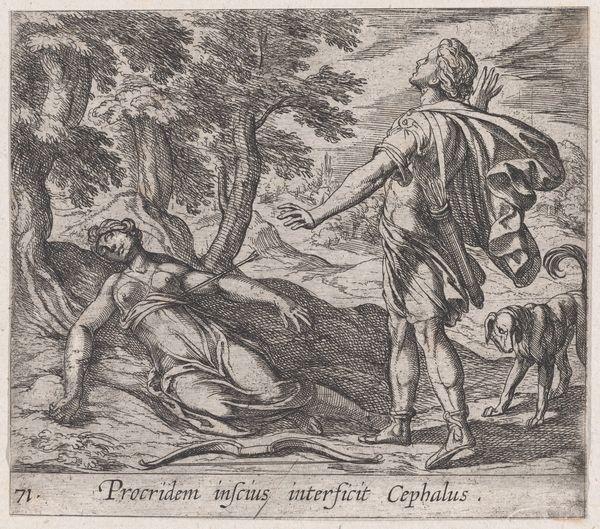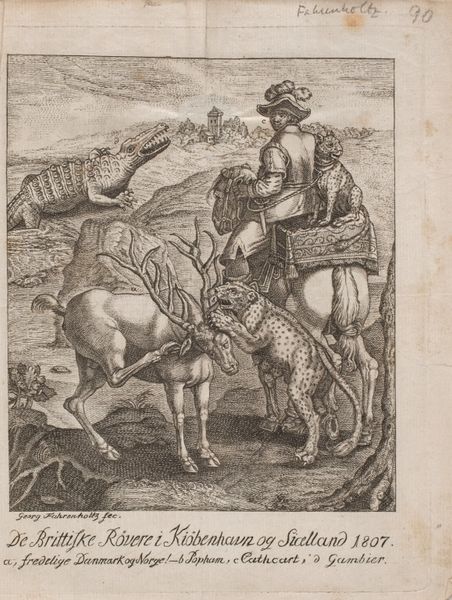
engraving
#
baroque
#
figuration
#
history-painting
#
nude
#
engraving
Dimensions: height 89 mm, width 87 mm
Copyright: Rijks Museum: Open Domain
Curator: Let's consider this engraving, "Jupiter en Io" by Nicolaes Cornelisz. Witsen, created around 1659 and held here at the Rijksmuseum. It’s a vivid depiction from Ovid's Metamorphoses. Editor: The initial impression is one of dense, almost frantic energy, achieved entirely through the relentless cross-hatching. The lines appear to carve the forms right out of the surface of the paper, it's impressive. Curator: Indeed. The technique here is fascinating. Notice how the linear nature emphasizes the forms, but also conveys movement and texture, really driving home a certain drama. It highlights the narrative rather elegantly. Editor: From my perspective, I am struck by how the actual process informs the narrative being shown. The lines mimic transformation – a sort of visual morphing that parallels Io’s metamorphosis into a cow, overseen by a cloud-borne Jupiter. The social context is clear: classical myths rendered tangible by artisanal work. Curator: Precisely, and one can see how this careful manipulation of light and dark creates a visual hierarchy, drawing the eye to certain elements while leaving others in shadow, playing up the tension between visibility and concealment so intrinsic to this tale. Editor: The lines almost appear woven – hinting perhaps at the material production linked to artistic dissemination. Its very accessibility and replicability democratize themes of mythology. Was it meant to be appreciated as high art, or exist functionally as visual instruction or decoration? Curator: A keen point! We see the balance between the immediate narrative impact, but with deeper layers in symbolism as we consider mythological tradition of desire and power at play between Io, Jupiter, and Juno in an allegorical staging. Editor: Reflecting on the dialogue, the interplay of craftsmanship, distribution, and cultural context serves a distinct experience in interpreting this image as more than just the depicted story of divine will. It offers insight into the work of image production and dissemination. Curator: Absolutely. Considering form and the story enmeshed, Witsen uses engraving not only to relay a myth, but also to actively shape the meaning behind it, bringing timeless conflicts into focus via visual rhetoric.
Comments
No comments
Be the first to comment and join the conversation on the ultimate creative platform.
